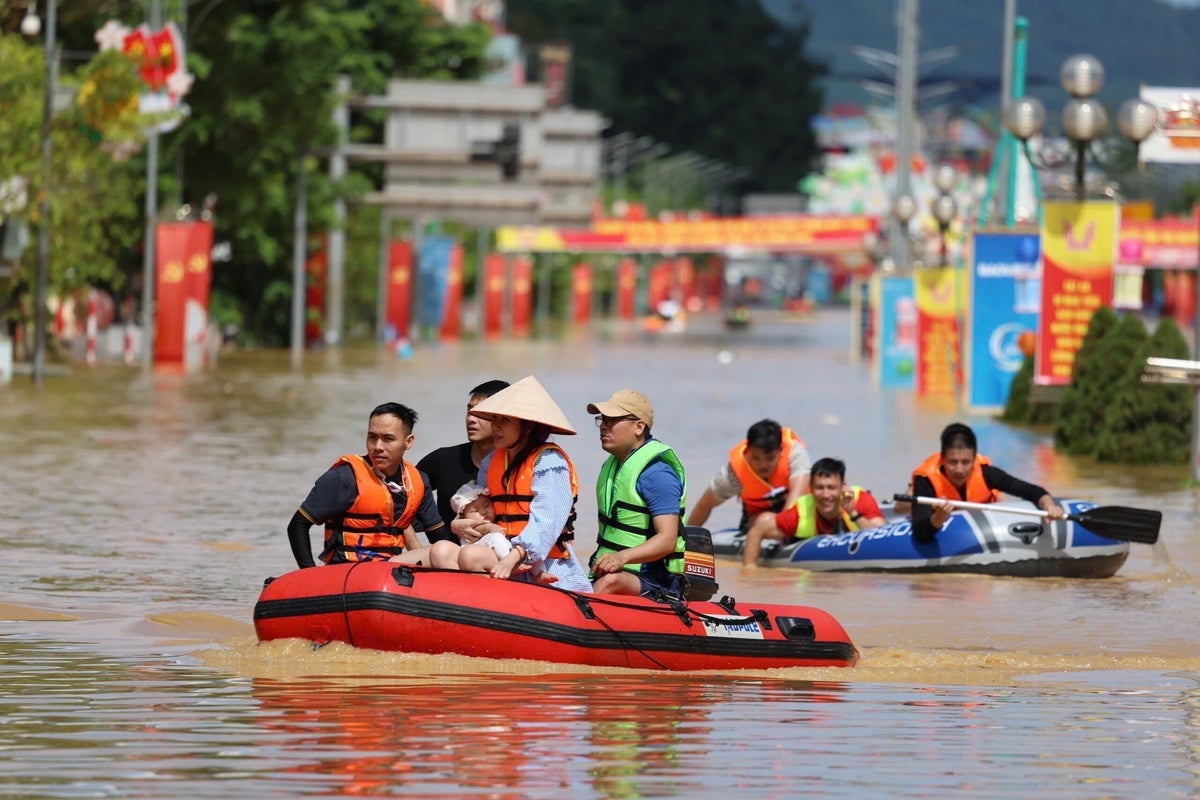
Torrential rains in the aftermath of Typhoon Matmo triggered widespread flooding in northern Vietnam, killing at least three people and damaging thousands of homes.
The typhoon, despite not hitting Vietnam directly, brought heavy rains Tuesday that left rivers swollen, flooded streets, submerged houses and caused numerous landslides in the region that had already battled four other typhoons and tropical storms since September.
According to Vietnamese state media, more than 4,800 homes were damaged as of Tuesday.
Authorities said three people were killed due to landslides in the provinces of Cao Bang and Thanh Hoa, and four others were missing after being swept away by flood in Thai Nguyen and Thanh Hoa.
In hard hit Thai Nguyen, just north of the capital Hanoi, the swollen Cau River flooded several communities, with residents saying the waters rushed in so quickly that they were unable to move furniture. Some neighborhoods were isolated and authorities deployed rescue boats to deliver relief.
Heavy rains stopped Wednesday but alerts remain for low-lying areas where flooding is expected to last until the weekend. Vietnamese Prime Minister Pham Minh Chinh approved an emergency aid package worth 140 billion VND ($5.3 million) to help the northern provinces affected by the flooding, according to state media.
Annually, Vietnam experiences 10–13 tropical cyclones, but the frequency of intense, back-to-back typhoons is increasing, suggesting a shift driven by climate change, says Benjamin Horton, dean of the School of Energy and Environment at City University of Hong Kong.
Since August, Vietnam has been battered by storms like Kajiki, Ragasa, and Bualoi.
Global warming is making tropical storms stronger and wetter, according to experts, since warmer oceans provide the storms with more fuel, driving more intense winds, heavier rainfall and shifting precipitation patterns across East Asia.







